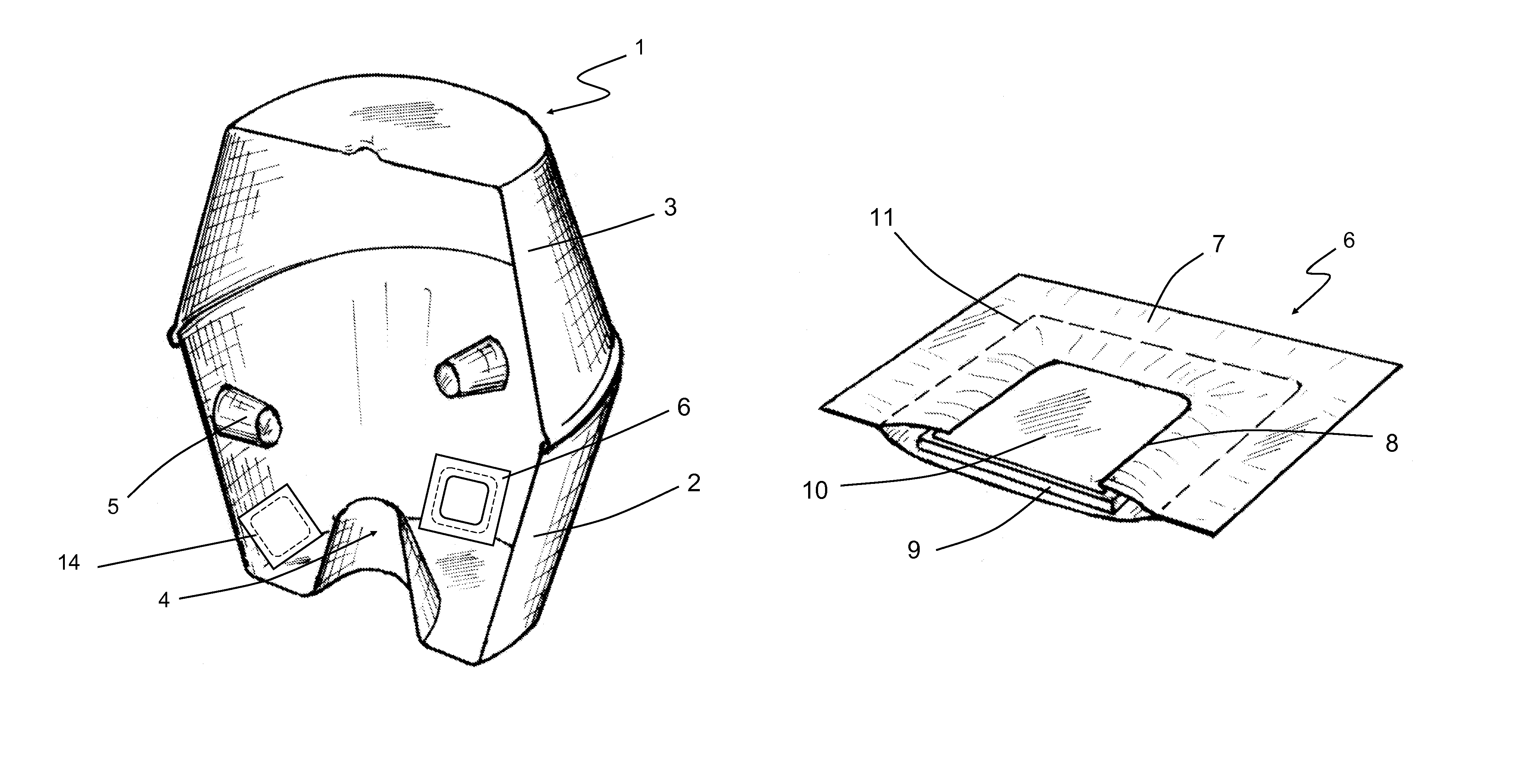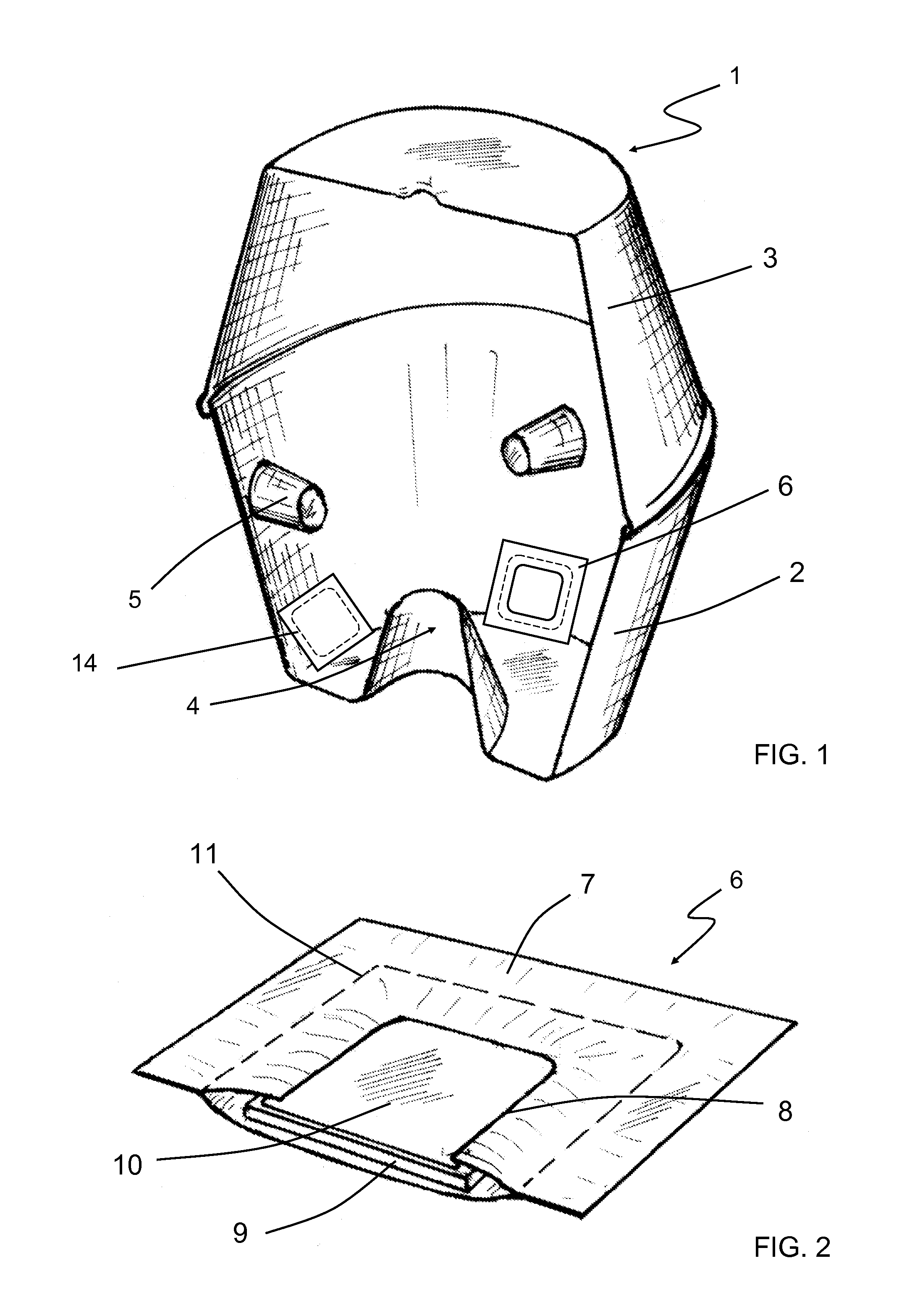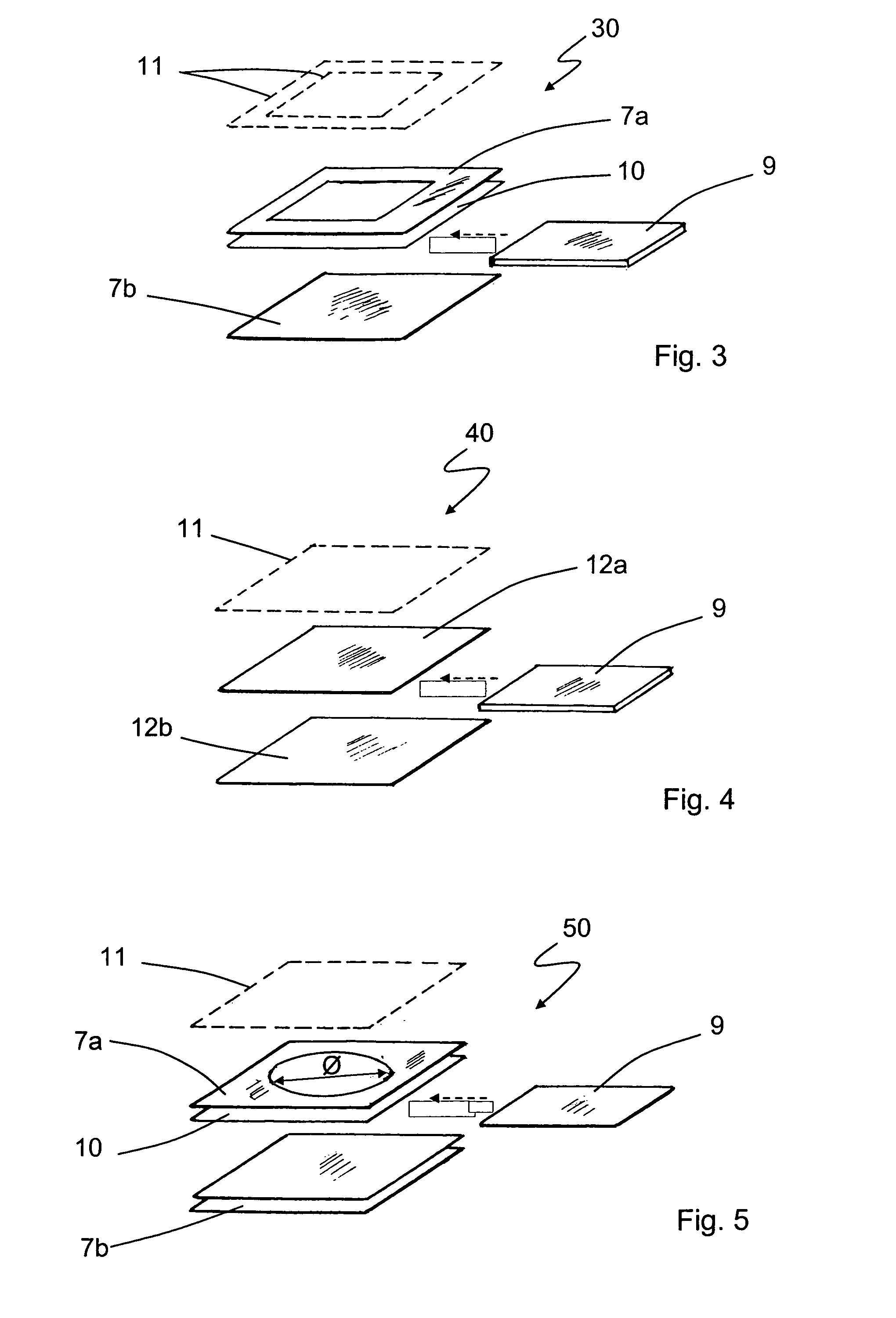Trapping device for frugivorous insects
a trapping device and insect technology, applied in the field of trapping devices for frugivorous insects, can solve the problems of reducing the effectiveness of the diffuser, prolonging the effectiveness, and shortened the service life of the diffuser, so as to increase the duration of the diffuser, and reduce the cost of the trapping process.
- Summary
- Abstract
- Description
- Claims
- Application Information
AI Technical Summary
Benefits of technology
Problems solved by technology
Method used
Image
Examples
example 1
[0038]The aim of a first experiment was to ascertain that an increased load of ammonium acetate determined a greater duration of the insect capturing efficiency period for all three attractant diffusers, without the need to modify the load of the other two. Moreover, the experiment was also aimed at proving that the greater the diffusion, the greater the number of insects captured.
[0039]Diffusers were prepared in the following way for a large scale trapping:
[0040]A first diffuser 30, similar to the one in FIG. 3, (with the container consisting of a sheet made from an aluminium / polyethylene / polyester complex; non-woven polyethylene fabric membrane (TYVEK®) and cellulose support) was loaded with 4.25 g of ammonium acetate from an aqueous solution of ammonium acetate at 67% w / w (weight / weight) and 33% w / w water.
[0041]A second type of diffuser 30, similar to the one in FIG. 3, (with the container consisting of a sheet made from an aluminium / polyethylene / polyester complex; non-woven poly...
example 2
[0057]A second experiment revealed that when the 1,5 diaminopentane, ammonium acetate and trimethylamine are contained in one single diffuser of the type and materials mentioned in the description, the system's efficiency is virtually equal to using a separate diffuser for each chemical component.
[0058]The field test protocol is the same as that used in Example 1.
[0059]According to the description, diffusers were prepared as follows for a large scale trap:
[0060]A first type of diffuser 30, similar to the one in FIG. 3, (with the container consisting of a sheet made from an aluminium / polyethylene / polyester complex; non-woven polyethylene fabric membrane (TYVEK®) and cellulose support) was loaded with 7.8 g of ammonium acetate from an aqueous solution of ammonium acetate at 67% w / w and 33% w / w water.
[0061]A second type of diffuser 40, like the one in FIG. 4, (with non-woven polyethylene container-membrane (TYVEK®) and cellulose support), was loaded with an aqueous solution of trimethy...
PUM
 Login to View More
Login to View More Abstract
Description
Claims
Application Information
 Login to View More
Login to View More - R&D
- Intellectual Property
- Life Sciences
- Materials
- Tech Scout
- Unparalleled Data Quality
- Higher Quality Content
- 60% Fewer Hallucinations
Browse by: Latest US Patents, China's latest patents, Technical Efficacy Thesaurus, Application Domain, Technology Topic, Popular Technical Reports.
© 2025 PatSnap. All rights reserved.Legal|Privacy policy|Modern Slavery Act Transparency Statement|Sitemap|About US| Contact US: help@patsnap.com



